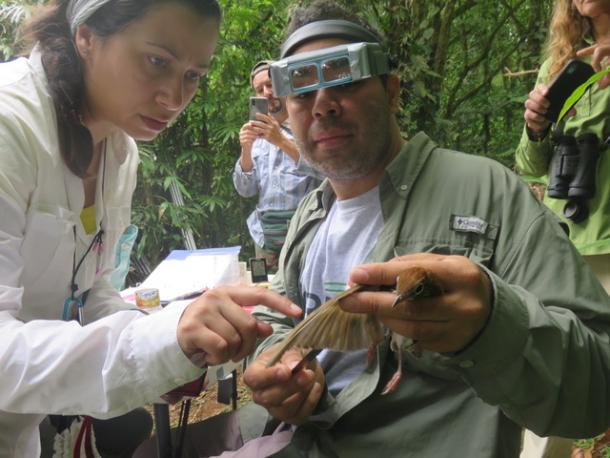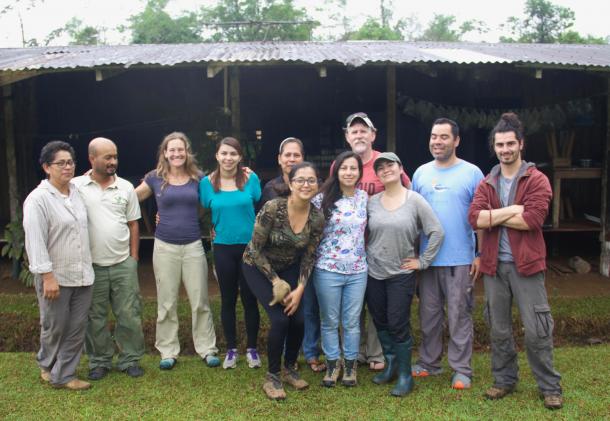
The GDFCF bird research team, in collaboration with Costa Rica Bird Observatories (CRBO), just spent two weeks in Area de Conservación Guanacaste monitoring the presence and use of ACG rain forests by neotropical migratory birds. Below is a snapshot of one field day at Estación Pitilla:
Our day starts at 5:00 am, with the theme music from Harry Potter (someone’s alarm choice). The bunk room slowly rumbles to life, with people pulling on clothes, donning headlamps, and stumbling into the kitchen. A light breakfast of coffee and cookies awaits; the real breakfast of gallo pinto, queso, tortillas, and eggs will come later in the morning.
By 5:30 am, we are headed toward our make-shift field station, in the heart of the Atlantic-side Caribbean rain forest, which is a 15-minute walk from Estación Pitilla. By 6:00 am, the darkness is lifting, and we begin to unfurl the 14 mist nets that have been set up along the trail. Unfurling them any earlier would likely mean a haul of bats, so we wait for dawn’s light.
The first net walk begins at 6:30 am and, for the next several hours, we’re busy. Net walkers, who check the nets every half hour, come back with birds in white cloth bags. The bird banders wait at the field station, ready to identify each bird, take measurements, band the bird, take photographs, and then release it – as quickly as possible. The excitement from the group is palpable every time a bag is opened, and we get to see what kind of bird has been caught: is it a Wood Thrush? A trogan? A black-and-white warbler? Birding books get pulled out and people check to see if they can add a new species to their life list; others pull up eBird and do the same.
By 10 or so, the activity lessens, and fewer and fewer birds are caught. By noon, we are done, or earlier, if the temperature gets beyond a certain critical point. The nets are rolled up, supplies are secured and covered in case of rain, and we all head back to the station for lunch.
Our afternoons are spent entering data, napping, or exploring the trails around Pitilla – where we may see frogs, snakes, tapirs, monkeys, or even – more birds. The banter over dinner is a mixture of Spanish and English; the topics vary widely, but never stray too far from birds. By 8:30 pm, the station is quiet. Most of us have made our way to bed, knowing that tomorrow, we repeat the process. This February, the team spent three days at Pitilla, three days at Estación Leiva, and three days in Sector Santa Rosa.
